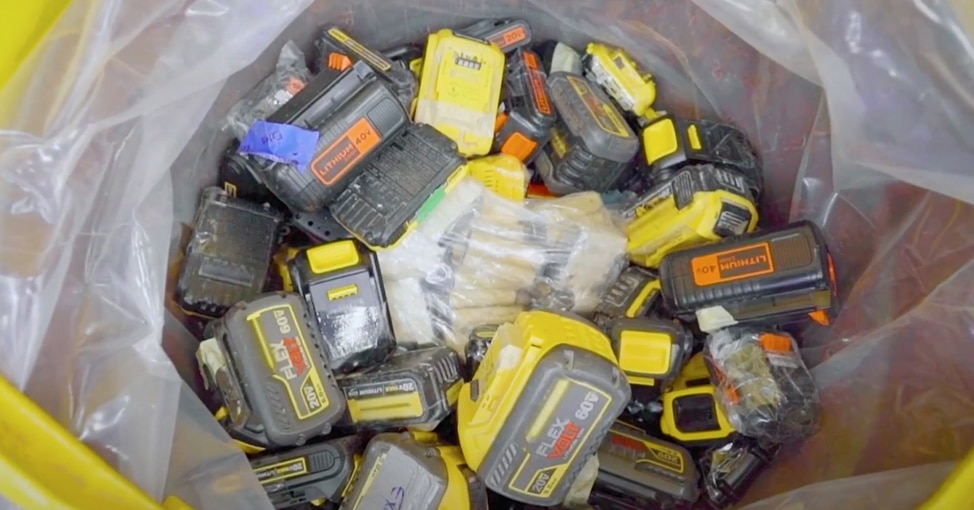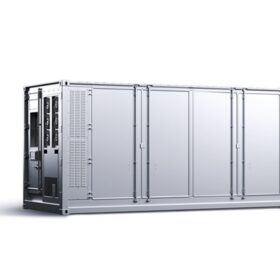Li-Cycle, a Canadian battery recycling firm has chosen the location for its first commercial lithium-ion battery recycling Hub: Eastman Business Park in Rochester, New York.
Construction of the $175 million Hub facility is set to begin in 2021 and the facility is planned to be fully operational in 2022.
The company selected EBP as the site for the facility due to the nature of infrastructure available at the site including utilities, logistics and other physical infrastructure.
“The Rochester area has a long history of the types of projects that we’re going to push forward with the Hub,” Li-Cycle Chief Process Engineer, Chris Biederman told pv magazine. “That was important to us, in terms of workforce and pre-existing infrastructure, particularly around things like utilities, which means access to power and water, all the things that will play into our Hub process and feed into it.”
Biederman and Li-Cycle Executive Chairman, Tim Johnston, shared that the area also provides value in its proximity to the company’s initial Spoke facility in Kingston, Ontario and in the ease of shipping materials to Rochester, be it by rail or by ship. They also added that the area’s workforce is acutely suited to the type of work that will be done at the plant, drawing on the area’s industrial and chemical processing history.
The refining and recycling process
The facility, once completed, will be a wet chemistry/hydrometallurgical plant that will refine battery-grade materials from ‘black mass’ generated from pre-processing spent lithium-ion batteries. The company also has a separate Spoke facility, set to be operational at the park in late 2020, that will produce the aforementioned ‘black mass’ from spent lithium-ion batteries. The terms ‘Hub’ and ‘Spoke’ are used to differentiate the types of plants the company operates, with the commercial goal being that a handful of regional Spoke plants will produce ‘black mass’ for a regional Hub plant to then refine.
“Our process is a submerged shredding process, developed by Li-Cycle.” Johnston said. “There’s a number of key benefits to this, one being that we can process all form factors of lithium-ion batteries. It doesn’t matter the size, it doesn’t matter the chemistry: from the smallest format lithium-ion battery all the way through to the largest electric vehicle module. We process without discharging, so we can do that safely. We don’t thermally treat our batteries, it’s a low-temperature process.”
Johnston also added that the spoke facilities produce no wastewater and no meaningful air emissions. All the water in the plant is recycled back through the plant.
The Hub will have the capability to process material from the equivalent of 60,000 metric tons of spent lithium-ion batteries, roughly equating to 120,000 electric vehicle battery packs and will be the only source of battery grade lithium carbonate in North America. Beyond North America, the Hub will be the first commercial facility globally to produce battery-grade lithium chemicals from spent batteries.
“As part of Li-Cycle’s global roll-out strategy, the planned facilities in EBP will enable Li-Cycle to leverage its industry-leading technology to foster the development of a closed loop within the robust lithium-ion battery supply chain in the U.S and globally,” said Ajay Kochhar, CEO and Co-Founder of Li-Cycle.
Li-Cycle has previously run a demonstration Hub in Kingston, Ontario to determine design criteria for the build out of this first Commercial Hub. In April, Li-Cycle reported it had shipped its first recycled battery materials from its Ontario plant
Eliminating e-waste
The facility is set to provide a huge boom to the e-waste recycling industry, which has been fairly underdeveloped, especially in North America, up to this point. In 2019, just 17.4% of e-waste was properly collected and recycled.
For Li-Cycle, the opening of the hub is not meant to show off that recycling is possible, or what advanced stages it has reached, but rather to create tangible, meaningful industry change and to reduce reliance on mined materials.
“One of the key reasons why we chose the scale that we did, it was based on the availability of material, but also the ability to produce meaningful amounts of end-product chemicals for our customers,” Johnston said. One of the things that we realized early on is that, in order to be a relevant producer of these materials, we have to have scale. Whilst there is huge support for recycling within the lithium battery industry, they want to see meaningful amounts of materials that have an impact on their supply chain.”
This content is protected by copyright and may not be reused. If you want to cooperate with us and would like to reuse some of our content, please contact: editors@pv-magazine.com.








Good work, I’m really curious, which recycling route will be the superior route in the end, but I assume, it will take a few more years until it is figured out, wether pyrometallurgy, hydrometallurgy or a combination is the most promising practice. At least, researchers are still eager to present various approaches nowadays:
https://www.mdpi.com/2075-4701/10/8/1069